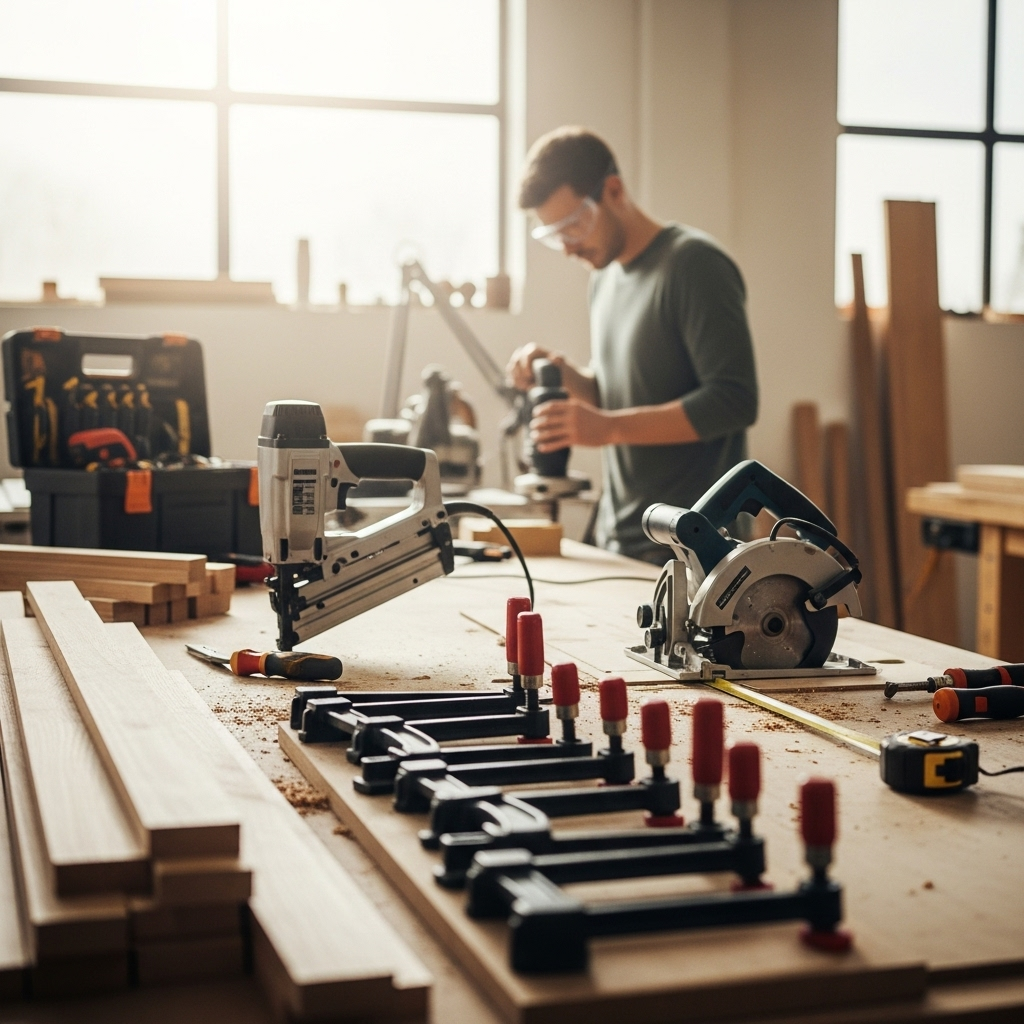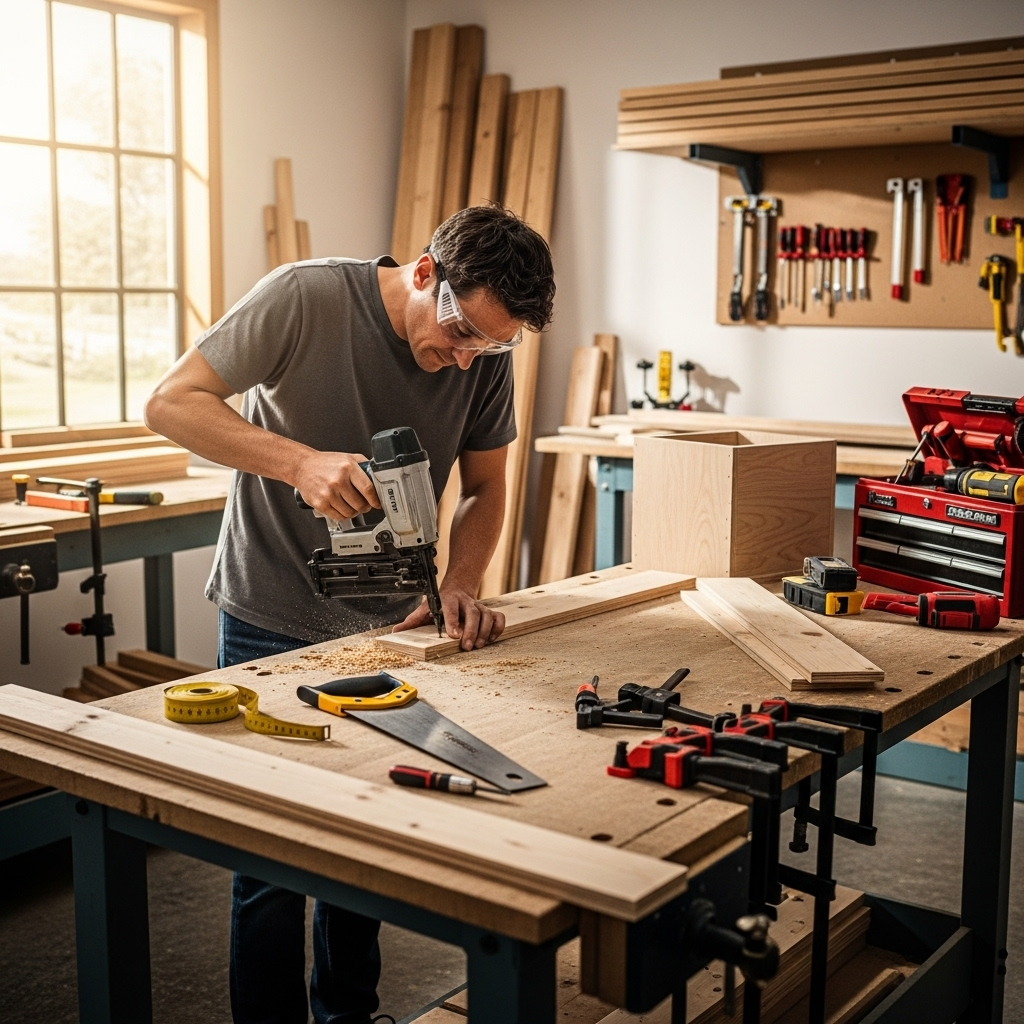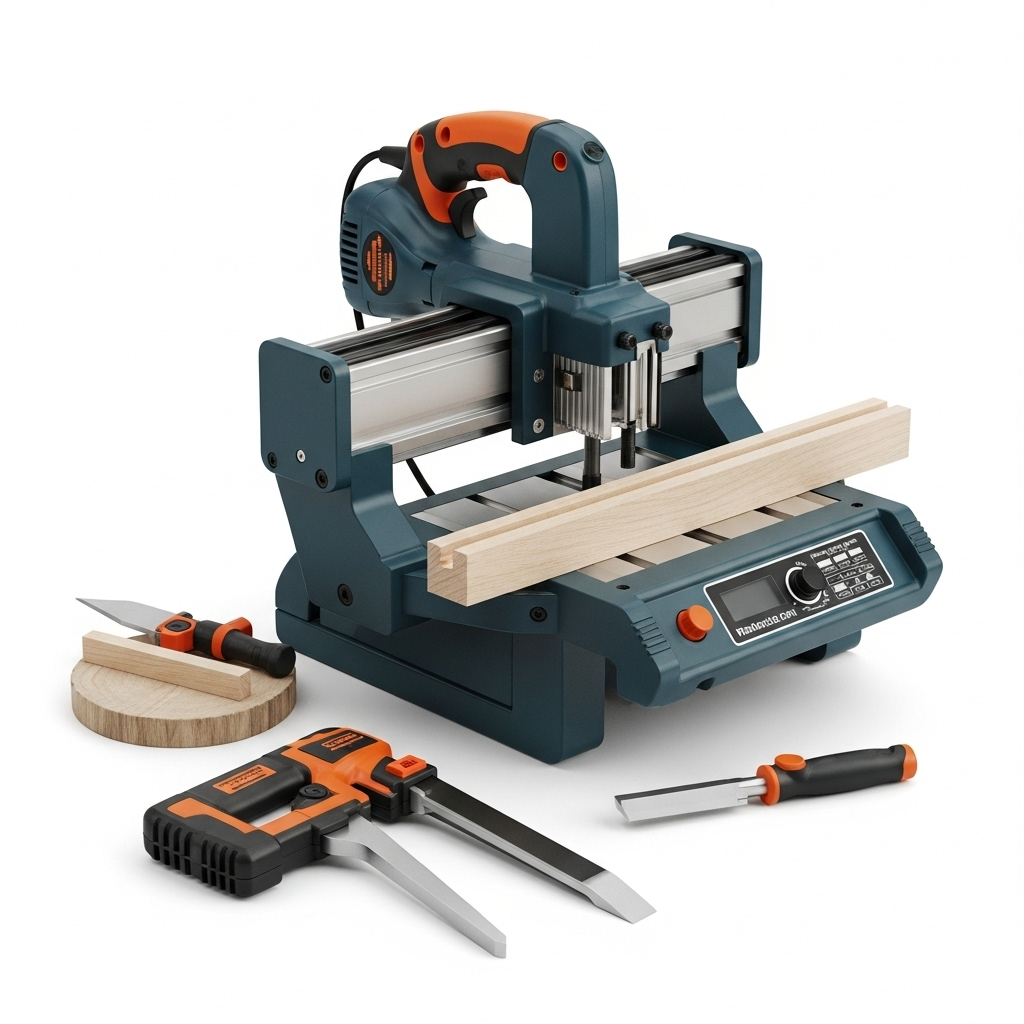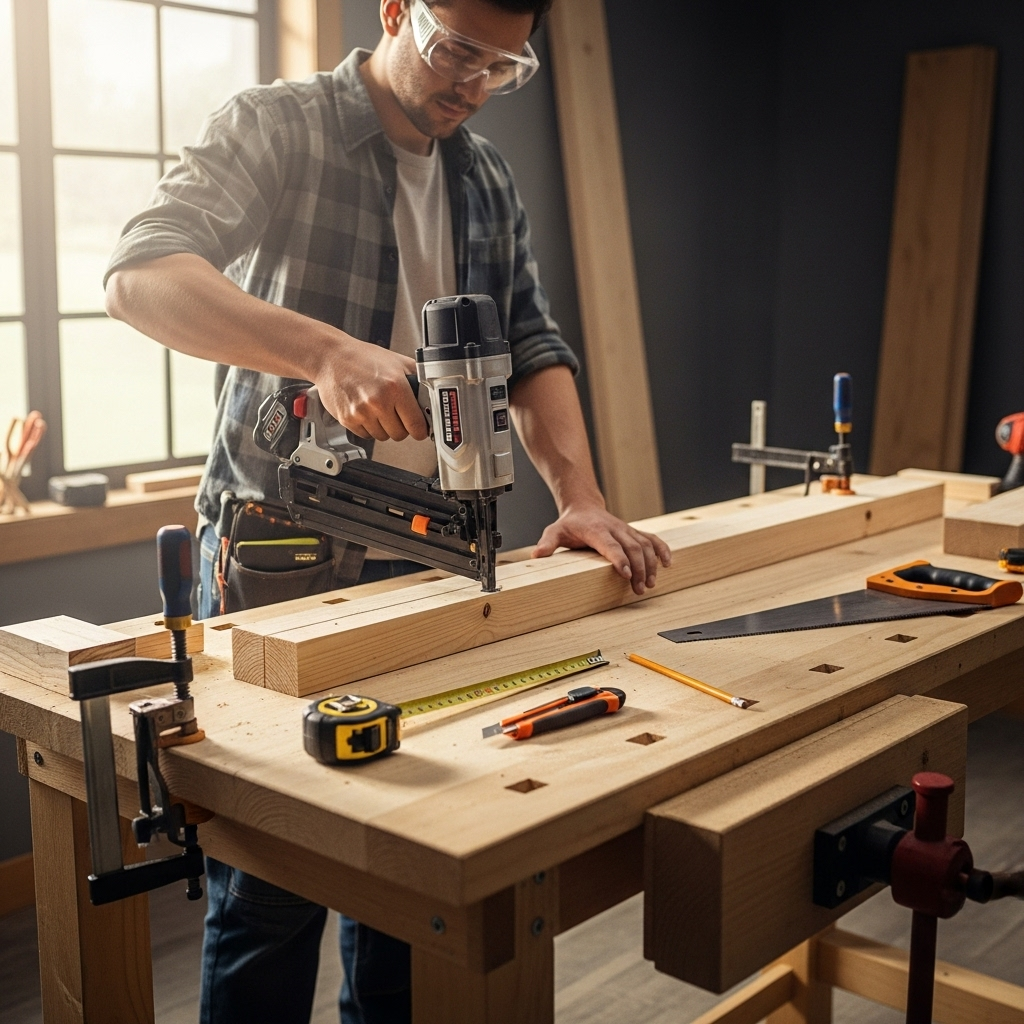Birch tree landscape design is about showcasing their stunning bark and graceful form. Success lies in choosing the right varieties, placement, and complementary plantings to highlight their unique beauty in your yard. Follow these expert tips for a breathtaking birch-inspired landscape.
Hey there, fellow DIYers and nature lovers! Jack Shaffer here. Ever looked at a birch tree and just admired its elegant, often peeling bark? They’re truly somethin’ special, adding a touch of magic to any garden. But sometimes, getting that perfect look can feel a bit tricky. You want to highlight their beauty, not hide it, right?
Don’t worry, we’re going to break down birch tree landscape design into simple, enjoyable steps. We’ll cover everything from picking the right birch to making sure it thrives and looks amazing year-round. Get ready to transform your yard with these easy-to-follow tips!
Table of Contents
Why Birch Trees Are Fantastic for Landscaping
Birch trees offer a unique charm that other trees just can’t match. Their most striking feature is, of course, their bark. Think of the brilliant white peeling bark of the Paper Birch, or the shimmering coppery tones of the River Birch. It’s like nature’s artwork, especially captivating against a backdrop of snow in winter or dark evergreens in summer.
Beyond the bark, birches have a delicate, airy canopy that allows dappled sunlight to filter through, creating beautiful light patterns on the ground below. They also have a graceful, often fast-growing habit, meaning you can enjoy a significant presence in your landscape relatively quickly. Many varieties are quite hardy and adaptable, making them a great choice for a range of climates.
Choosing the Right Birch for Your Design Dreams

Picking the perfect birch is the first big step. There are many types, and each has its own personality and growing needs. Think about the space you have, your climate, and the look you’re going for. Here are a few popular choices:
Paper Birch (Betula papyrifera)
This is probably what most people picture when they think of birch. Its iconic pure white, peeling bark is stunning. Paper birches can grow quite large, so they need plenty of space. They tend to do best in cooler climates.
River Birch (Betula nigra)
A fantastic choice for many regions, especially those with warmer summers. River birches have beautiful, exfoliating bark that ranges from salmon-pink to cinnamon and reddish-brown. Unlike some other birches, they tolerate heat and wetter soil conditions well, making them more versatile.
Royal Frost Birch (Betula ‘Royal Frost’)
This is a cultivar known for its striking combination of white bark and dark, burgundy-purple leaves. It’s a smaller, more ornamental tree, perfect for adding a pop of color and unique texture without taking up too much room.
Heritage Birch (Betula ‘C.P. Rose’)
Another excellent River Birch cultivar. Heritage Birch boasts attractive peeling bark in shades of cream, pink, and tan. It’s known for its fast growth, disease resistance, and adaptability to various soil types, including drier conditions.
Key Considerations for Birch Tree Placement
Where you plant your birch makes a world of difference in how it looks and how well it grows. These trees aren’t just about their beauty; they need the right spot to truly shine and thrive.
Sunlight Needs
Most birch trees prefer full sun to partial shade. This means they need at least six hours of direct sunlight per day. Too much deep shade and they might become leggy, with less dense foliage and reduced bark color intensity. Remember, the bark is a major showpiece, and good sunlight helps it look its best.
Soil and Drainage
Birches generally prefer well-drained soil. While River Birch varieties can tolerate more moisture, it’s crucial to avoid constantly waterlogged conditions, which can lead to root rot. Good drainage ensures healthy root systems, and healthy roots mean a healthy, beautiful tree.
Space and Growth Habit
Consider the mature size of the birch species you choose. Some can become quite large. Make sure to plant them far enough away from structures, power lines, and other trees to allow for their full growth. Look up the specific mature height and spread for your chosen variety. This planning prevents future problems and ensures your tree has room to express its natural form.
Proximity to Water Features
River Birch, as the name suggests, often does well near water or in areas that might experience occasional flooding. However, even these prefer not to be constantly submerged. If you have a pond or stream, a River Birch can be a wonderful addition, softening the edges with its graceful form and attractive bark.
Visibility
Plant your birch where its unique bark can be seen and appreciated, especially during the fall and winter months when other plants might be bare. A location visible from your main living areas, a frequently used pathway, or an entryway can maximize its impact. Think about how the morning or evening sun will hit the bark – it can create a truly magical glow.
Designing with Birch: Complementary Plantings and Features

Once you have your birch in place, the fun really begins: designing the surrounding landscape! The goal is to create a harmonious setting that enhances the birch’s natural elegance. Think about textures, colors, and forms that will make your birch the star of the show.
Understory Plantings
Choose plants that won’t compete too aggressively with the birch for light and nutrients. Shade-tolerant perennials, groundcovers, and low shrubs work wonderfully. Consider:
- Ferns: Their delicate fronds add a lush, woodland feel and thrive in the dappled shade often found under birches.
- Hostas: With their broad leaves in various shades of green, blue, and variegated patterns, hostas provide a cool contrast to the birch’s airy foliage.
- Groundcovers: Creeping thyme, ajuga, or pachysandra can create a soft, verdant carpet that complements the birch’s trunk.
- Hellebores: These offer beautiful, early-blooming flowers and evergreen foliage, providing interest even in late winter.
Contrast with Color and Texture
Birch trees are often celebrated for their light bark and delicate leaves. Playing with contrasting elements can make them pop:
- Dark Foliage: Plants with deep green, burgundy, or even black foliage, like Heuchera varieties or certain ornamental grasses, create a strong visual anchor next to the pale bark.
- Bold Forms: While birches are graceful, a few plants with bolder leaf shapes or architectural forms can add interest. Think of ornamental grasses with upright plumes or a stately hosta.
- Seasonal Color: Incorporate flowering shrubs or perennials that provide color during different seasons. Spring bulbs like daffodils or late-blooming asters can add pops of brightness. Consider shrubs with vibrant fall color to echo the changing leaves of the birch itself.
Hardscaping Elements
Hardscaping can define the space around your birch and enhance its natural beauty:
- Gravel Paths: Natural stone or light-colored gravel paths winding around a cluster of birches can evoke a serene, naturalistic feel.
- Boulders: Strategically placed natural boulders can anchor the landscape and provide a rustic backdrop that complements the bark.
- Mulching: Use a natural mulch like shredded bark or wood chips. This helps retain moisture, suppress weeds, and creates a clean, unified look around the base of the tree. Avoid piling mulch directly against the trunk, as this can encourage rot. The Royal Horticultural Society offers great advice on mulching best practices.
Understanding Birch Pests and Diseases
Just like any plant, birch trees can face challenges. Being aware of common issues helps you keep your trees healthy and looking their best. Early detection is key!
Bronze Birch Borer
This is perhaps the most serious pest for many birch species, especially in warmer climates or stressed trees. The larvae tunnel under the bark, disrupting the tree’s vascular system. Look for D-shaped exit holes, wilting branches, and dieback starting from the top of the tree. Stressed trees are more susceptible, so proper watering and good soil health are your best defense.
Aphids
These small insects can cluster on new growth, sucking sap and causing leaves to curl or yellow. They are usually a cosmetic problem and can often be hosed off with water or treated with insecticidal soap. A strong infestation can weaken a young tree, so keep an eye out.
Leaf Miners
You might see irregular trails or blotches on the leaves caused by the larvae of leaf-mining insects. While unsightly, they rarely cause significant harm to a healthy, mature tree. Pruning affected leaves can help reduce the population.
Fungal Diseases
Conditions like powdery mildew or leaf spot can sometimes affect birch trees, especially in humid weather. Good air circulation around the tree and avoiding overhead watering can help prevent fungal issues. Healthy trees are generally more resistant.
For general tree care and pest identification, resources from university extension offices can be incredibly helpful. For example, sites like the Michigan State University Extension Pest and Disease page offer a wealth of information and diagnostic tools.
Essential Care for Thriving Birch Trees

Providing your birch tree with the right care is crucial for its health and for bringing out its best visual features. It’s not complicated, but a little attention goes a long way.
Watering
Consistent moisture is important, especially for young trees and during dry spells. Water deeply at the base of the tree, allowing the water to soak in rather than just running off. Avoid overwatering, as birches don’t like sitting in soggy soil. Aim for soil that is moist but not saturated.
Fertilizing
Birches aren’t usually heavy feeders. If your soil is reasonably healthy, you might not need to fertilize at all. If you do fertilize, use a balanced, slow-release fertilizer in spring. Avoid over-fertilizing, which can make the tree more susceptible to pests and diseases.
Pruning
Pruning is mainly for shape and to remove dead or damaged branches. The best time to prune birches is usually in late summer or early fall after the leaves have fully developed. This is because birches can “bleed” sap if pruned in late winter or early spring when the sap is running strongly. Remove any branches that are rubbing against each other or growing awkwardly. For larger pruning jobs, it’s wise to consult an arborist.
Mulching
As mentioned before, a layer of organic mulch around the base of the tree is beneficial. It helps keep the soil cool and moist, suppresses weeds, and slowly enriches the soil as it decomposes. Keep the mulch a few inches away from the trunk to prevent rot and discourage pests.
Troubleshooting Common Birch Landscape Design Issues
Sometimes, even with the best intentions, things don’t go exactly as planned. Here are a few common hiccups and how to get them sorted.
Problem: Sparse Foliage or Leggy Growth
Cause: Not enough sunlight, poor soil conditions, or stress from drought or pests.
Solution: Ensure the tree is planted in a location that receives adequate sun. Improve soil drainage and amend with compost. Water deeply during dry periods. If pests are a problem, address them directly.
Problem: Bark Not Peeling or Less Vibrant
Cause: This can be due to species variation (some birches have less dramatic peeling bark), young age, or environmental stress. Lack of sunlight can also reduce bark vibrancy.
Solution: Ensure the tree is healthy and in its ideal growing conditions. Consider planting multiple birches together to create a grove effect, which naturally highlights their bark.
Problem: Tree Looking Unhealthy After Planting
Cause: Transplant shock is common. The tree is adjusting to its new environment.
Solution: Provide consistent watering, especially for the first year or two. Avoid fertilizing until the tree shows signs of new growth. Protect it from extreme weather if possible. Patience is key here!
Birch Tree Landscape Design: A Summary Table

Here’s a quick reference table to help you keep the most important points in mind:
| Design Aspect | Key Tips | Why It Matters |
|---|---|---|
| Species Choice | Select based on climate, space, and desired bark color/texture (e.g., Paper, River, Royal Frost). | Ensures the tree thrives and meets your aesthetic goals. |
| Placement | Full sun to partial shade, well-drained soil, adequate room to grow, visible location. | Maximizes bark display, promotes healthy growth, and avoids future problems. |
| Plant Companions | Ferns, hostas, groundcovers; plants with contrasting dark foliage or bold forms. | Enhances birch’s beauty, adds texture and seasonal interest. |
| Hardscaping | Gravel paths, natural boulders, appropriate mulch. | Defines space, adds aesthetic appeal, and supports healthy soil. |
| Care | Consistent watering, minimal fertilization, proper pruning, adequate mulching. | Maintains tree health, vigor, and visual appeal. |
| Pest/Disease Management | Monitor for borers, treat aphids/leaf miners, ensure good air circulation. | Prevents serious damage and keeps trees looking their best. |
Frequently Asked Questions About Birch Tree Landscape Design
Q1: How close can I plant birch trees to my house?
A: It’s best to plant birch trees at least 15-20 feet away from your house to allow for their mature canopy spread and root system, and to prevent potential issues with falling branches.
Q2: Can birch trees be planted in containers?
A: While possible for very young or dwarf varieties, birch trees generally prefer to be planted in the ground where their root systems can develop fully. Container growing can lead to stress and limit their growth potential significantly.
Q3: When is the best time to plant a birch tree?
A: The ideal time to plant birch trees is during their dormant season, typically early spring or fall, when the weather is cooler and the tree is not actively growing. This reduces transplant shock.
Q4: Why is my birch tree losing leaves in the summer?
A: Premature leaf drop in summer by birch trees is often a sign of stress, usually due to drought, extreme heat, or pest infestations like the bronze birch borer. Check for watering issues and signs of pests.
Q5: How do I make my birch tree’s bark brighter white?
A: While genetics play a role, ensuring your birch tree is healthy, well-watered, and receiving adequate sunlight will promote the most vibrant bark coloration possible for its species. A healthy tree will naturally have better bark.
Q6: Are birch trees messy?
A: Birches can drop small leaves and twigs, like most deciduous trees. However, their delicate foliage means they often don’t produce large, heavy debris. Proper site placement and good garden cleanup practices will manage any mess.
Conclusion
Designing your landscape with birch trees is a rewarding journey that brings unique beauty and a touch of elegance to your outdoor space. By selecting the right species, placing them thoughtfully, and providing consistent care, you can create a stunning focal point that you’ll admire for years to come. Remember those complementary plantings and hardscaping elements we discussed? They’re your magic tools for making that birch truly sing!
Don’t be afraid to experiment and let your creativity flow. With these expert tips, you’re well-equipped to design a birch tree landscape that’s not only beautiful but also healthy and thriving. Happy designing, and enjoy the natural artistry of your birch trees!